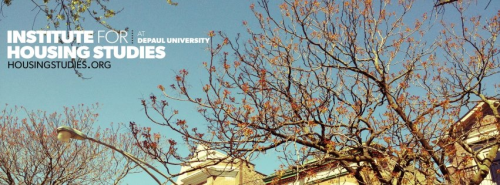Apr 23, 2013
Shortage of affordable rental housing hits Chicago area: DePaul study
Shortage of affordable rental housing hits Chicago area: DePaul study
CHICAGO — Demand for affordable rental housing for lower-income households in Cook County outpaces supply, according to a new report from DePaul University’s Institute for Housing Studies.
The findings show an affordability gap, between demand and supply of affordable housing in suburban Cook County, increased by 25 percent between 2007 and 2011. The city of Chicago experienced an 8 percent increase in the gap during the same time.
“After the housing crisis, households shifted to renting for a number of reasons,” said Geoff Smith, co-author of the study and executive director of the institute, affiliated with the Driehaus College of Business. “The weak economy, homes lost to foreclosure, increased difficulty receiving a mortgage, a lack of confidence in the housing market and flexibility with renting all contributed to a boom in the rental housing market.”
Northern Cook County suburbs, including Evanston, Skokie, Palatine and Hoffman Estates, experienced the largest contrast between supply and demand of housing available for low-income renters.
The consequences of a lack of affordable rental housing to meet demand means a growing number of households are allocating a higher portion of their income towards rent, Smith said.
Households are considered “rent burdened” if they spend more than 30 percent of their monthly income toward rent. In Cook County, the number of rent-burdened households increased by nearly 14 percent between 2007 and 2011.
In the wake of the housing crisis, the DePaul study found both Chicago and suburban Cook County experienced an increase in households renting and a decline in home ownership.
The amount of renters grew by 10.3 percent in the city and 11 percent in the suburbs between 2007 and 2011. During the same time, owner-occupied homes decreased by 11.6 percent in the city and 5.9 percent in the suburbs. This mirrored a national trend marking an increase in renters every year since the housing crisis began in 2007.
A key finding of the study showed an increase in low-income renters drove Cook County’s overall rental growth. In the city, renter households making less than 50 percent of the area median income (AMI), or less than $37,400 a year for a household of four, accounted for 70 percent of the increase in the number of renters overall. In the suburbs, people making less than 50 percent of AMI accounted for nearly all of the increase in households renting since 2007.
Of the countywide renters, 56 percent make less than half of the area median income, the study showed. Renting households in Cook County increased among every age group. However, the study uncovered a nearly 10 percent increase in 25-to-34-year-old households.
Additional findings in the study showed the growth of single-family rental homes in Cook County. Single-family homes originally built for owner occupancy but used as rental properties increased by 30 percent in suburban Cook County and by 21 percent in the city during 2007-2011.
Underlying characteristics related to Cook County’s rental housing demand can be geographically segmented into strong, weak and transitional submarkets, according the study. Traditionally, strong submarkets saw overall growth as a byproduct of increased rental demand, while weak markets saw an overall decline in demand for both rental and owner-occupied housing and rising vacancy levels. Transitional markets remain largely owner occupied, but saw recent dramatic increases in renters.
“The appropriate rental housing policy responses will vary in each of these market types,” Smith said. “In strong markets, keeping housing affordable is the challenge, while in weaker markets the focus is on community development and rebuilding demand. In transitional markets, understanding whether the increase in rental demand is short- or long-term will inform the appropriate policy response.”
The Institute for Housing Studies is a research center based at DePaul University. It provides analysis and data to inform housing policy and practice. The complete 2013 Cook County State of Rental Housing report is available as a download at housingstudies.org. Sarah Duda, assistant director for the Institute for Housing Studies, co-authored the study.
SOURCE:
Geoff Smith
gsmith33@depaul.edu
312-362-5962

